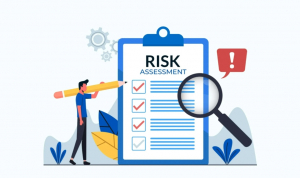Excellent Practices in Feedback Management by Info Science &Tech
- 2024-03-24 18:30:00
- WANG JING
- Original 729
Leveraging Small Feedback for Big Impact:Excellent Practices in Feedback Management by Info Science &Tech
I. Preface
Feedback management is a crucial aspect of maintaining customer relationships and improving products for software companies. By effectively collecting, processing, and tracking customer feedback, software companies can promptly understand customer needs, identify product defects, meet evolving customer demands, and provide superior customer experiences.
However, in practical operations, many software companies encounter various challenges in feedback management. This article aims to draw attention to customer feedback management among software companies through the excellent practices of Info Science &Tech , providing suggestions and practical methods.
II. Company Overview
Established in 2000, Beijing Info Science &Tech Co.,LTD (referred to as Info Science &Tech, or IST) has consistently focused on information system construction in fields such as financial regulation and risk control. It boasts a large-scale information technology service team in the domestic financial risk field.
IST's clientele includes regulatory agencies, national policy banks, commercial banks, rural credit cooperatives, financial leasing companies, insurance firms, securities companies, trusts, funds, payment companies, and more, with over 200 clients. Among these, banks constitute the majority, spanning various types of banking institutions. Despite rapid expansion, IST maintains a steadfast, stable approach, driving overall improvement with practicality, innovation, and high-quality service, earning widespread praise from clients.
III. Common Challenges in Feedback Management
1. Dispersed Feedback Sources and Chaotic Versions
The project implementation team provides customer feedback to the product manager through various channels such as emails, WeChat, online meetings, etc. Sometimes, the same requirement appears multiple times through different channels, leading to inconsistent formats and chaotic version management. Without a unified tool to record feedback processing progress, it becomes inconvenient to retrieve information and prioritize without reorganizing and summarizing customer feedback. However, reorganizing feedback consumes a significant amount of time and effort.
2. Difficulty in Tracking Feedback Progress and Lack of Closure
Without a unified tool to record feedback processing progress, the implementation team cannot actively track whether the feedback has been acknowledged by the product team, entered development, or when it was implemented. They can only passively wait for notifications. Simultaneously, management finds it challenging to understand the overall acceptance status of feedback. Moreover, there is a risk of oversight leading to missed processing of feedback during its circulation.
3. Repetitive Development of Common Customer Needs
In many cases, software companies serve hundreds or even thousands of clients, and as the client base expands, the likelihood of similar requirements arising increases. However, under project-based operations, if a company's feedback management is chaotic, it can lead to the repetitive development of similar functionalities. This not only consumes a significant amount of research and development resources but also slows down overall development progress. Additionally, it can result in client dissatisfaction and complaints.
4. Customer Non-Application After Feedback Acceptance and Function Development
Several reasons may contribute to the scenario where customers fail to apply feedback after it has been accepted. One reason is the lack of clear diagnosis of the problem by project implementation personnel, coupled with insufficient understanding of customer needs, resulting in a discrepancy between the reported requirements and the actual expectations of the customers. Another reason could be excessive reliance on tools by the customers, even though the problem itself surpasses the capabilities of the product functionality. Regardless of the reasons behind this situation, the outcome is significant wastage of resources.
5. Niche Requirements and Non-Universal Product Demands
Certain requirements may impact the business of a particular customer, but from an industry-wide perspective, these requirements may be highly individualized. For software companies focused on generic products, failure to promptly identify these personalized requirements can be detrimental to the overall product direction.
With these challenges in mind, let's delve into the excellent feedback management practices of Info Science &Tech.
IV. Excellent Practices in Feedback Management at IST
1. Establishing a Unified Customer Feedback Collection Channel
To address the issue of dispersed feedback sources, IST utilizes the "Feedback" module of ZenTao project management software as a centralized collection point. To ensure the completeness and standardization of feedback content, IST expanded the workflow functionality in ZenTao software according to company requirements and added some mandatory fields.
2. Establishing a Clear Feedback Handling Process
IST has established a five-tier feedback handling process, specifying the reviewers and review focuses at each level. After project implementation personnel create feedback, it undergoes three levels of review: project manager, project director, and department head, with a focus on evaluating feedback related to requirements.
2.1 Project Manager Review Focus:
- Confirm whether the requirement is a genuine customer need. Some requirements may not be fully articulated by the customer themselves, hence necessitating thorough communication between the implementation team and the customer to reconstruct business scenarios, facilitating the identification of requirements that effectively address the problem.
- Assess whether the implementation team can address the requirement independently. For instance, through secondary development by on-site developers or by configuring flexibly with the assistance of technical support colleagues.
- Evaluate the impact of the requirement on project costs and progress, as well as the presence of associated risks.
2.2 Project Director Review Focus:
- Evaluate the impact of the requirement on the overall project integration costs and progress, and assess the presence of associated risks.
- Ensure the prioritization of requirements is reasonable.
2.3 Department Head Review Focus:
- Assess the benefits of the requirement for general product improvement and determine whether the requirement belongs to personalized products.
- Additionally, the department head's review aligns with IST's requirements for interdepartmental collaboration and communication.
Through this review process, feedback congestion is effectively avoided, alleviating pressure on the headquarters' product department and providing a channel for important and urgent feedback.
After passing the third-level review, the feedback is transferred to the product team, where responsible members conduct a final review. If the feedback content is incomplete, the product team will return it to the project team for further refinement. Feedback that passes the final review and meets the requirements will be converted into requirements, bugs, tasks, or to-do list.
3. Controlling Process Approval Time
Increasing the approval nodes in the feedback process can effectively enhance the quality of feedback management, but it may also affect the speed of approval due to the increase in nodes. To address this issue, the Quality Management Department at IST provides reminders and monitors the approval progress of feedback, requiring each reviewer to address feedback within two days to ensure the efficient operation of the feedback process.
4. Real-time Follow-up and Feedback Loop
With the ZenTao feedback management module, the project implementation team can gain real-time insights into the progress of feedback handling, including the number of feedback in "to be processed," "to be closed," and "to be reviewed" states. ZenTao supports categorizing feedback based on product modules, priority, severity, etc., facilitating organization and management for the team. Management can utilize ZenTao's advanced reporting features to gain a higher-level perspective on the status of feedback handling across different product lines, enabling a better understanding of customer needs and unresolved issues, and timely measures can be taken to improve products and services.
Through the establishment and operation of the feedback management system, IST has achieved unified customer feedback channels, significantly improved feedback quality through a multi-level approval mechanism, and successfully reduced resource wastage resulting from redundant development. Simultaneously, the pressure on the product department has been effectively alleviated, with overall feedback efficiency improving by over 30% compared to before. The operation of a virtuous cycle makes the feedback management system more efficient and sustainable.
V. Customer Evaluation
"ZenTao has helped us realize the implementation of R&D project management. The feedback module has addressed pain points in coordinating work, thus enhancing team efficiency."
——Li Cheng, Operations Director at Info Science &Tech
VI. Conclusion
What started as a small feedback management initiative has evolved into a lever for driving product improvements and enhancing customer satisfaction. As businesses increasingly prioritize customer feedback, feedback management has gradually become a critical strategic tool, helping companies stand out in the competitive market landscape.
Products
- ZDOO
- ZDOO Cloud
Support
- Book a Demo
- Tech Forum
- GitHub
- SourceForge
About Us
- Company
- Privacy Policy
- Term of Use
- Blogs
- Partners
Contact Us
- Leave a Message
- Email Us: support@zentaoalm.com










